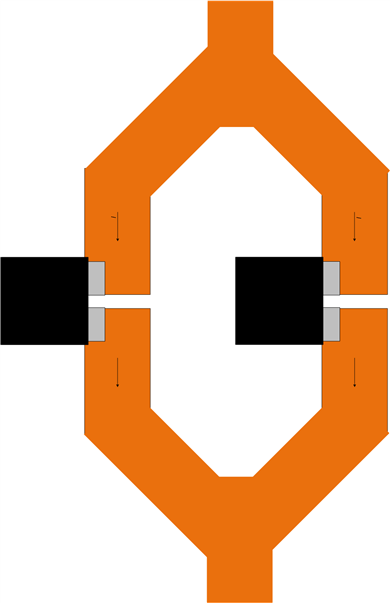Other Parts Discussed in Thread: TMCS1133
Tool/software:
We are considering TMCS1133 for an application that requires measuring up to 84A continuous. Based on temperature derating and max amp ratings it looks like we cannot quite get there with this part. And unfortunately the Rth seems too high for effective heatsinking.
How feasible is it to put two of these parts in parallel to split the current between them? Even if the current splits unevenly, it seems we could sum the outputs from both devices to measure total current.
Are there any other issues we could run into with two TMCS1133 in parallel?



